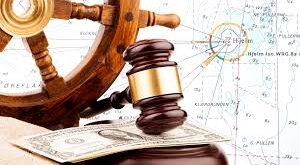- Minister of Power and New and Renewable Energy informed that under the scheme a total 2.86 crore households have been electrified.
- Pradhan Mantri Sahaj Bijli Har Ghar Yojana – Saubhagya was launched in 2017.
- Achieving universal household electrification, by providing electricity connections to all un-electrified households in rural areas and all poor households in urban areas in the country.
Salient features of the scheme:
- Providing last mile connectivity and electricity connections to all un-electrified households in rural areas.
- Providing Solar Photo Voltaic (SPV) based standalone systems for un-electrified households located in remote and inaccessible villages where grid extension is not feasible or cost effective.
- Providing last mile connectivity and electricity connections to all remaining economically poor un-electrified households in urban areas.
- Non-poor urban households are excluded from this scheme.
Issues with rural electrification
- Definition of an electrified village under rural electrification scheme (2005)
- An electrified village is defined as one that has the following:
- provision of basic infrastructure such as distribution transformers and lines in the inhabited locality,
- provision of electricity in public places like schools, panchayat office, health centers, dispensaries, and community centers, and
- at least 10% of the total number of households in the village are electrified.
- Hence according to this definition, a village would be called electrified even if up to 90% of households in it do not have an electricity connection.
Inadequate infrastructure:
- It also noted that the infrastructure being provided under the scheme is highly inadequate, unreliable and unsustainable.
- The actual electrification requirement of villages must be assessed, and it should be ensured that the state discoms provide electricity to the remaining households in the village.
Supply of electricity
- While the rural electrification scheme looks at creating infrastructure, the actual supply of electricity to households rests with the state discoms.
- These discoms are already facing huge financial losses and hence are unable to supply electricity to the villages.
- Discoms continue to supply subsidised power to agricultural and residential consumers, resulting in revenue losses.
- Electricity to below poverty line (BPL) households
- Under the scheme, the cost for providing free electricity connection per BPL household is Rs 3,000.
- It has been observed that this cost per household may be inadequate.
- Due to the low cost, the quantity and the quality of work has been getting compromised leading to poor implementation of the scheme.
SOURCE: THE HINDU, THE ECONOMIC TIMES, PIB
 Chinmaya IAS Academy – Current Affairs Chinmaya IAS Academy – Current Affairs
Chinmaya IAS Academy – Current Affairs Chinmaya IAS Academy – Current Affairs



